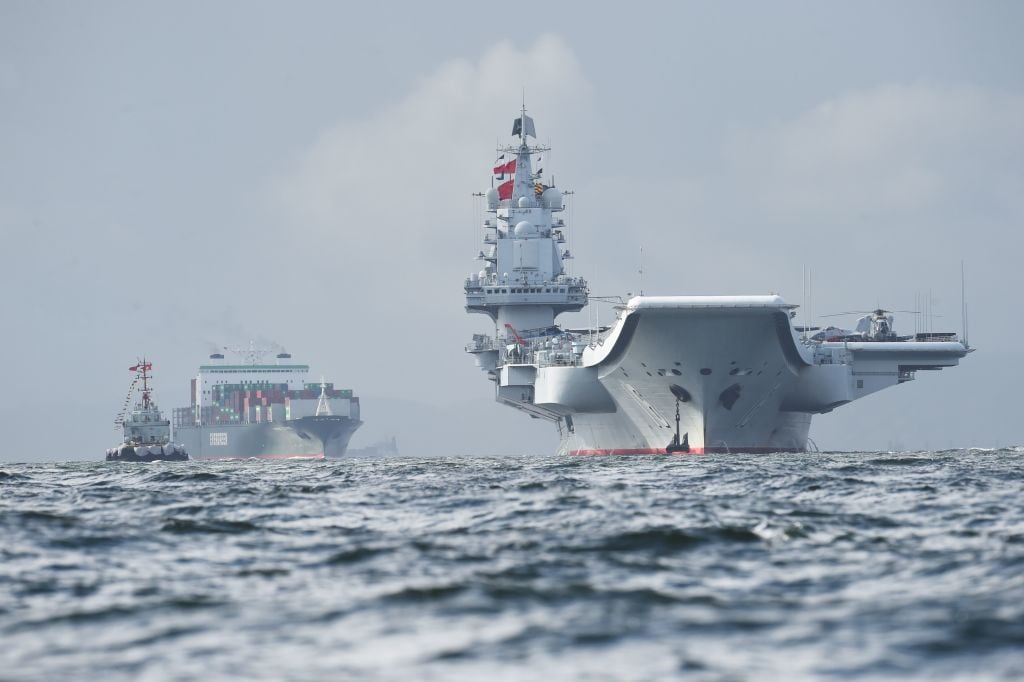WASHINGTON — With China now the second-largest spender on defense in the world, Chinese companies are logically going to rank among the largest defense firms. But quantifying that number has proven incredibly difficult thanks to the opaque nature of both government spending and the firms themselves.
Now, a London-based think tank has concluded that seven Chinese firms would rank among the top 20 defense companies in the world, each breaking $5 billion in defense revenues — a proportion that rivals any one nation outside the U.S.
Lucie Beraud-Sudreau and Meia Nouwens, two researchers with the International Institute for Strategic Studies, looked at eight key defense firms from China — the China Aviation Industry Corporation (AVIC), China Electronics Technology Enterprise (CETC), China North Industries Group Corporation (NORINCO), China South Industries Group Corporation (CSGC), China State Shipbuilding Corporation (CSSC), China Shipbuilding Industry Corporation (CSIC), China Aerospace Science and Technology Corporation (CASC), and China Aerospace Science and Industry Corporation (CASIC).
The researchers looked at the largest defense firms and key subsidiaries, excluding a pair of nuclear-focused Chinese companies, classifying each as defense- or civilian-focused. Then they used the differentiation to calculate how much of each company’s total revenues was derived from defense-related sales.
RELATED

It’s an imperfect metric, to be sure, but similar to estimations used in the Defense News Top 100 list for companies that do not disclose their defense revenues.
Compared to a 2016 list of defense companies maintained by the Stockholm International Peace Research Institute, the Chinese firms would rank as high as fifth overall and as low as 22nd. Compared to the 2016 numbers maintained and compiled by Defense News, the Chinese firms would rank similarly, with some light variation by a spot or two.
Although CSGC, with about $22 billion in defense revenue, is the largest Chinese firm, AVIC is perhaps the more interesting to focus on, as it’s symbolic of overall growth and the challenges facing Chinese firms, despite some eye-popping numbers.
Between 2010 and 2017, AVIC’s total revenue increased by a shocking 93 percent, from 210 billion Chinese yuan renminbi (U.S. $31 billion) to 403.5 billion Chinese yuan renminbi (U.S. $59.7 billion), according to IISS research.
Thirty-seven and a half percent of that revenue now stems from defense programs. But while AVIC has a massive, loyal customer base in the Chinese military, it is lacking in true innovation.
China’s “national research and development has been supplemented to a significant degree by an aggressive overt and covert trawl of Western technology — including through foreign company acquisitions and, it has been alleged repeatedly, through systematic hacking,” the researchers wrote, with areas such as aircraft engines representing an area where Western firms are still well-ahead.

“Given the rate of arms production for the People’s Liberation Army and the fact that Chinese arms exports are on the rise, one could consider that these SOEs [state-owned enterprises] will rise up in these rankings as a result,” Nouwens told Defense News.
However, she cautioned there is still a ways to go before these firms can challenge the largest Western companies, such as BAE Systems, Boeing or Lockheed Martin, the single-largest defense firm on the globe.
“I think they still have a bit of a road ahead of them to get to the level of large, Western primes. It would be a mistake to assume that these rankings have been achieved in the last five years, or even decade. The defense SOE sector has undergone numerous changes over the past decades,” she said. “ That being said, their rankings are impressive precisely because they are so high at this point in time.”
That said, one factor could change that, the same way it impacts all major defense companies: the potential of mergers and acquisitions. Nouwens said there have been rumors of possible mergers of Chinese firms, including one around CSIC and CSSC to combine into a single shipbuilder.
If those two companies are combined, their defense totals would put them easily into the top 10 overall.
The full details of the IISS research project will be unveiled in a future academic report.
Update 8/24/19 — after publication, IISS contacted Defense News with updated figures translating AVIC’s yuan renminbi to dollars. The correct figures have been updated here.
Aaron Mehta was deputy editor and senior Pentagon correspondent for Defense News, covering policy, strategy and acquisition at the highest levels of the Defense Department and its international partners.






